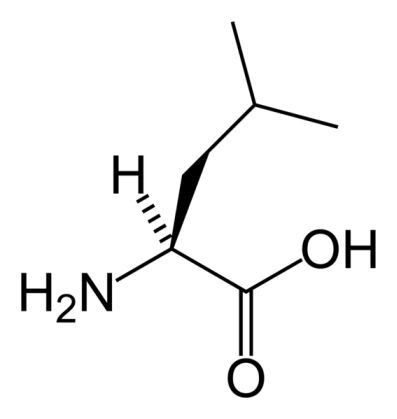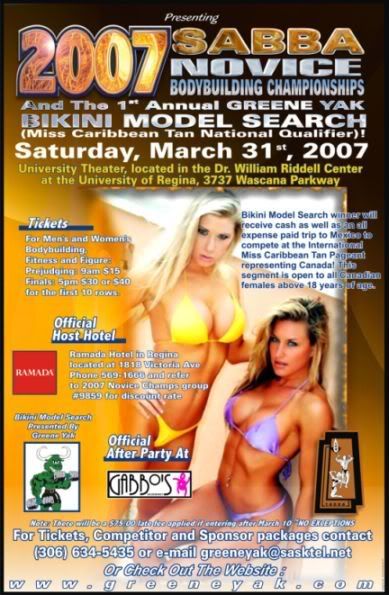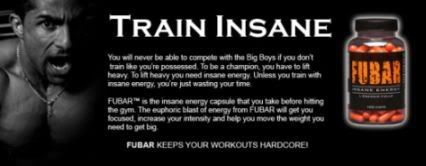Branched-Chain Amino Acids (Leucine, IsoLeucine, and Valine) also known as BCAA’s are the building blocks of the body. They make up 35% of your muscle mass and must be present for molecular growth and development to take place. BCAA's act as nitrogen carriers and assist the muscles in synthesizing other amino acids needed for anabolic muscle action.
Over the next little while I will not be discussing the anabolic effects about the BCAA’s but rather discussing the role of one very important BCAA – Leucine.

Leucine
Systematic Name: (S)-2-amino-4-methyl-pentanoic acid
After doing some research I came across an article put together by Susan M. Hutson (Department of Biochemistry, Wake Forest University School of Medicine, Winston-Salem, NC 27157) and Robert A. Harris (Department of Biochemistry and Molecular Biology, Indiana University School of Medicine, Indianapolis, IN 46202-5122)
Leucine as a Nutritional SignalAlthough the anabolic effects of amino acids originating from dietary protein on protein synthesis and cell function were first reported over 20 year ago, until recently to molecular basis for many of these observations remained elusive. Now there is convincing evidence that amino acids are actually participants in signal transduction pathways, activating in selected cells some of the same signaling cascades as the anabolic hormone insulin.
Activation of signaling pathways is now recognized to be an important non-protein function of amino acids. This can be and often is studied with amino acid mixtures. In most instances, however, the indispensable branch-chain amino acid Leucine can exert the same effects as amino acid mixtures.
Historically, Leucine has always seemed special and more important that the other two branched-chain amino acids, IsoLeucine and Valine. We have long known that Leucine is ketogenic and is specific among the branched-chain amino acids in its ability to stimulate insulin release from the islet cells of the pancreas (Panten et al. 1974).
A paper was put forth, “Regulation of Branched-Chain α-Keto Acid Dehydrogenase Kinase Expression” by Robert A. Harris, reviews the molecular mechanisms by which Leucine catabolism is controlled at the level of the branched-chain α-keto acid dehydrogenase complex. Evidence is presented for nutrient and hormonal regulation of expression of the branched chain α-keto acid dehydrogenase kinase. The hypothesis is put forth the involvement of thyroid hormone in the regulation of the expression of this gene.
A second paper has been put forth, “Function of Leucine in Excitory Neurotransmitter Metabolism in the Central Nervous System” by Susan M. Hutson, addresses the role of branched-chain amino acids in metabolism in the central nervous system. The hypothesis is advanced that branched-chain amino acids have an important role as donors of nitrogen for dispensable amino acid biosynthesis, analogous to their role in glutamine and alanine synthesis in skeletal muscle developed in the 1970s (Odessey et al. 1974, Chang and Goldberg 1978, Garber et al. 1976). Evidence that BCAA nitrogen is required for formation of the neurotransmitter glutamate has been reviewed (Yudkoff et al. 1996, Bixel et al. 1997, Hutson et al. 1998) and new findings on the special role of branched-chain amino acids in neurotransmitter metabolism in the central nervous system are present.
1. Chang T. W., Goldberg A. L. The metabolic fates of amino acids and the formation of glutamine in skeletal muscle. J. Biol. Chem. 1978;253:3685-3693
2. Fajans S. S., Knopf R. F., Floyd J. C., Power L., Conn J. W. The experimental induction in man of sensitivity to leucine hypoglycemia. J. Clin. Invest. 1963;42:216-229
3. Hutson S. M., Berkich D. A., Drown P., Xu B., LaNoue K. F. Role of branched-chain aminotransferase isoenzymes and gabapentin in neurotransmitter metabolism. J. Neurochem. 1998;71:863-874
4. Odessey R., Khairallah E. A., Goldberg A. L. Origin and possible significance of alanine production by skeletal muscle. J. Biol. Chem. 1974;250:290-298
5. Panten U., Christians J., Kriegstein E., Von Poser W., Hasselblatt A. Studies on the mechanism of L-leucine-and alpha-ketoisocaproic acid-induced insulin release from perifused isolated pancreatic islets. Diabetologia 1974;10:149-154
6. Yudkoff M., Daikhin Y., Grunstein L., Nissim I., Stern J., Pleasure D., Nissim I. Astrocyte leucine metabolism: significance of branched-chain amino acid transamination. J. Neurochem. 1996;66:378-385
In conclusion to this article I believe that there is substantial evidence that BCAA’s and specifically Leucine may have an important role on weight loss. I will continue do my research on the metabolic effects of this incredible amino acid and keep you posted with the findings.
Chris Belanger – VP Sales







